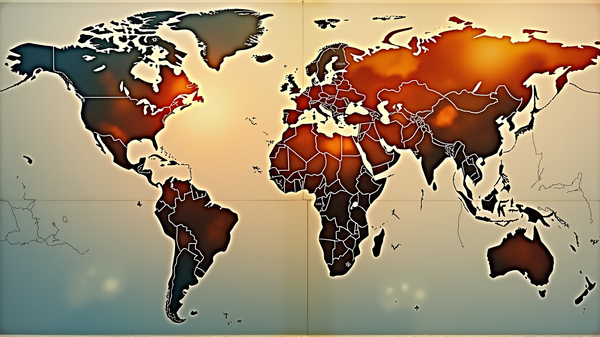A Snapshot of Resilience and Challenges in Nepal's Economy
Nepal's economic landscape is evolving with historic export highs yet struggles with trade deficits and infrastructure hurdles.

The economic landscape in Nepal is ever-evolving, presenting a picture of resilience and significant challenges as it strides toward long-term sustainability. The headlines might boast about historic highs in exports, surging stock markets, and booming banking deposits, yet a closer look reveals pressing concerns beneath these figures.
Navigating the Stock Market’s Volatility
With the NEPSE index experiencing a fall after an eight-day rally, closing 18.44 points down, one might interpret this as a standard market correction. However, this downturn highlights a growing sense of volatility exacerbated by the central bank’s latest move to withdraw NPR 5 billion from the market, as noted in the NRB’s recent auction plans.
Record Exports vs. Trade Deficits
The fiscal year 2024⁄25 closed with Nepal achieving a historic high in exports, NPR 277 billion. Yet, this remarkable achievement is overshadowed by the fact that key value-added products remain underrepresented, and significant trade deficits persist. For instance, despite leading in soya bean oil exports, Nepal reported a trade deficit in the commodity, indicating an overreliance on importing raw materials and low value-added goods.
Infrastructure Developments: Progress and Pitfalls
Nepal is witnessing substantial infrastructure initiatives, including the near-completion of the Tribhuvan International Airport’s capacity expansion. Similarly, efforts like the BP Highway repairs are pushing forward, but systemic inefficiencies, such as the lack of basic facilities at the Tribeni Customs Office, continue to impede seamless economic operations.
Banking Boom: A Double-Edged Sword
In other news, bank deposits in Nepal have reached a staggering NPR 7.245 trillion, surpassing the entire economy’s size. This might sound economic music to some ears, but it also calls for careful scrutiny. How will the financial industry’s massive growth impact broader economic stability, and what regulations are necessary to balance this unprecedented surge?
Unmet Potential in Local Production
While the domestic market has commendably expanded its 4G mobile user base exceeding 25 million, and regulations such as mandatory embossed number plates aim to modernize, the fundamental reliance on imported goods like paddy rice signals an untapped potential for local production. Over NPR 40 billion is spent annually on rice imports despite the capability for local production, urging a call to action for boosting internal agricultural efficiency.
Nepal’s journey towards economic maturity is indeed a complex venture. As stated in Khabarhub, “To sustain long-term economic growth, Nepal must focus on foundational reforms and embrace value-based production that genuinely reflects its abundant resources and untapped potential.”





